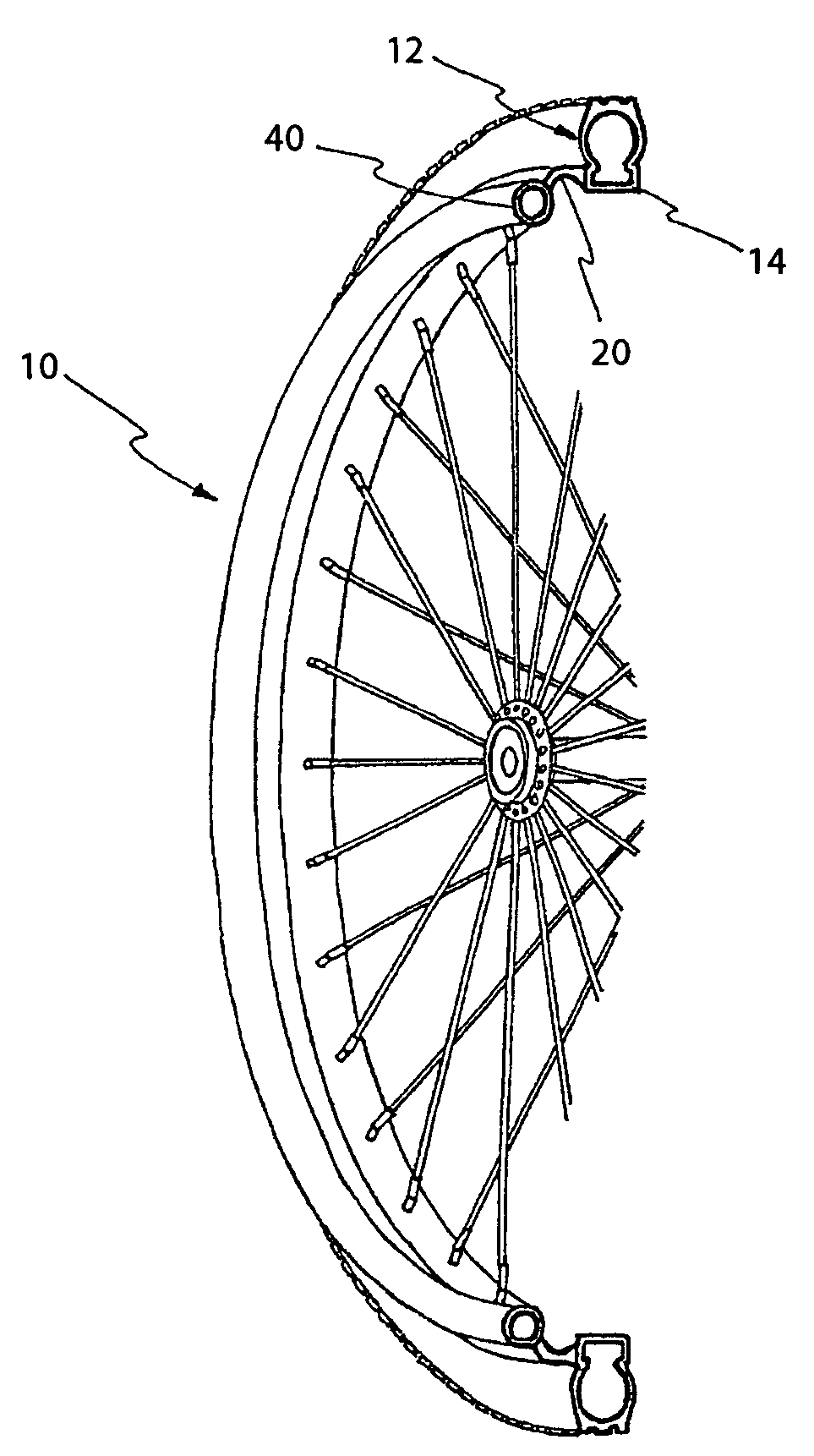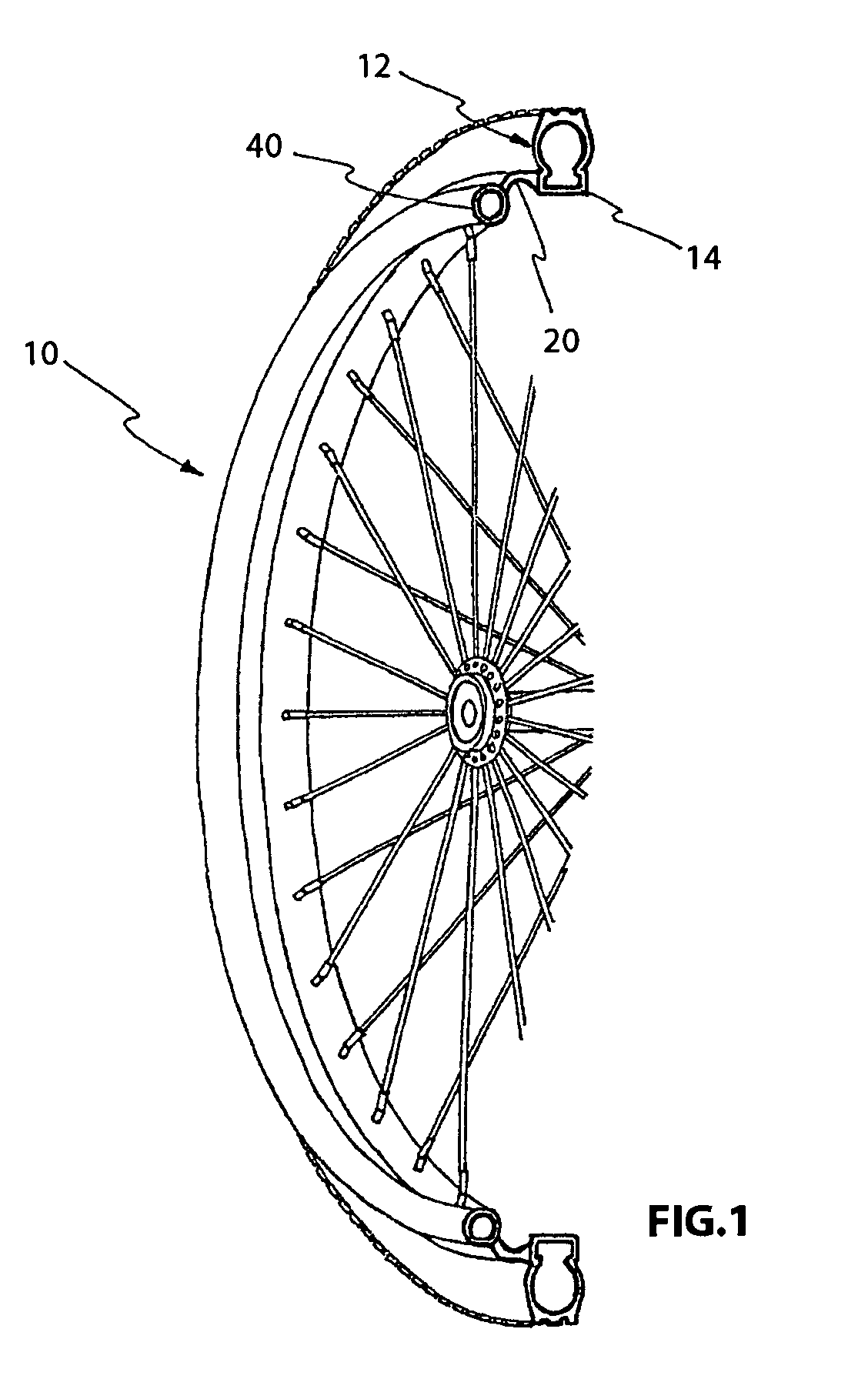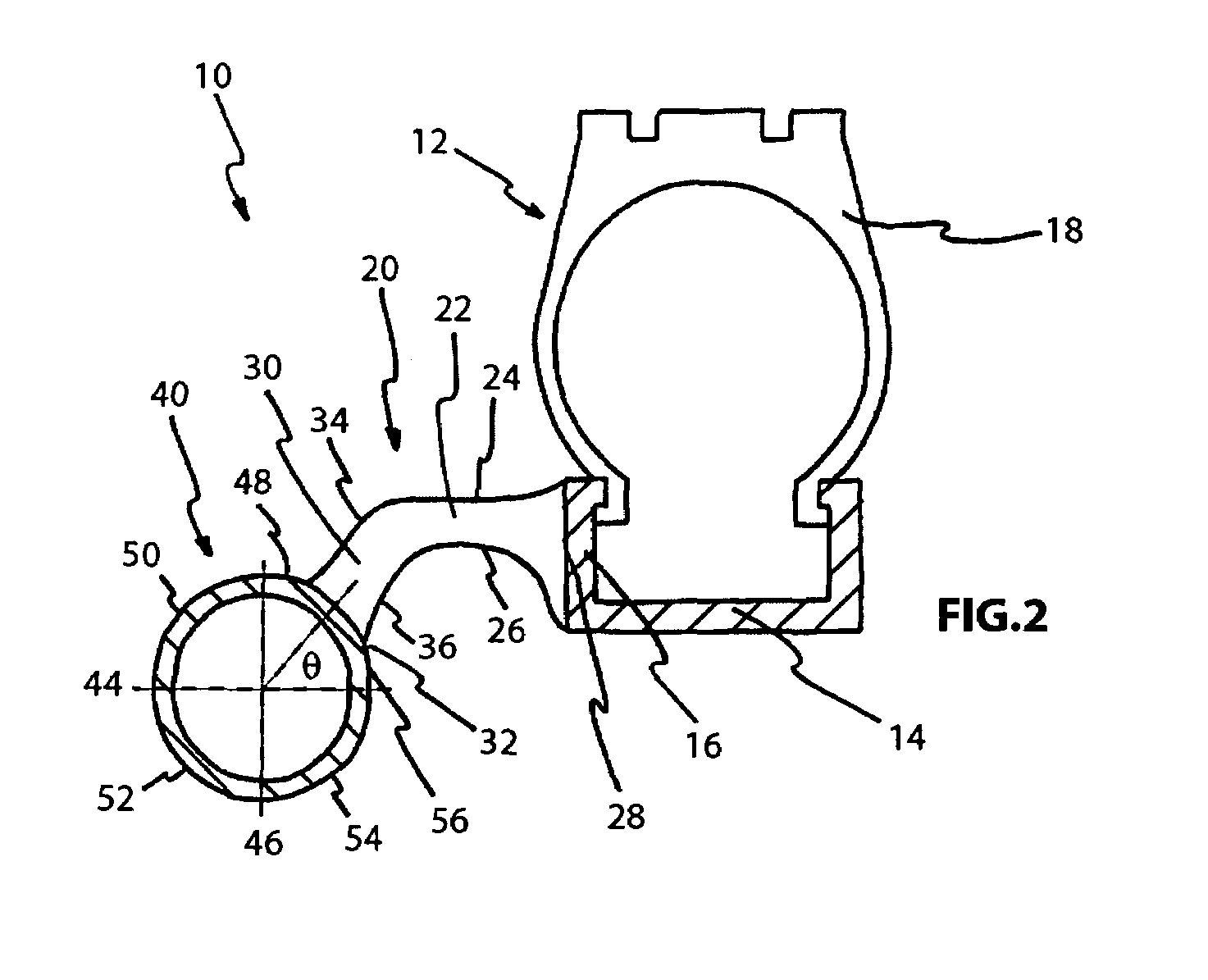Ergonomic wheelchair hand rim
- Summary
- Abstract
- Description
- Claims
- Application Information
AI Technical Summary
Benefits of technology
Problems solved by technology
Method used
Image
Examples
Embodiment Construction
[0031]Considering the drawings, wherein like reference numerals denote like parts throughout the various drawing figures, reference numeral 10 is directed to an ergonomic hand rim device for a manual wheelchair.
[0032]In its essence, and referring to the drawings, an embodiment of this invention provides an ergonomic hand rim device 10 for a manual wheelchair wheel 12 comprised of a wheel rim 14 including an outboard side 16 and having a tire 18 mounted thereon as illustrated in FIGS. 1 and 2. The ergonomic hand rim device 10 is comprised of a circular heat conducting tubular hand rim 40 and a continuous contoured elastomeric interface 20 spanning and operatively coupled between an upper inboard side or portion 32 of the circular heat conducting tubular hand rim 40 and the outboard side 16 of the wheel rim 14 as illustrated in FIGS. 1 through 13 such that when gripped by a hand of a user pushing forward the continuous contoured elastomeric interface 20 deforms to the hand of the user...
PUM
 Login to View More
Login to View More Abstract
Description
Claims
Application Information
 Login to View More
Login to View More - R&D
- Intellectual Property
- Life Sciences
- Materials
- Tech Scout
- Unparalleled Data Quality
- Higher Quality Content
- 60% Fewer Hallucinations
Browse by: Latest US Patents, China's latest patents, Technical Efficacy Thesaurus, Application Domain, Technology Topic, Popular Technical Reports.
© 2025 PatSnap. All rights reserved.Legal|Privacy policy|Modern Slavery Act Transparency Statement|Sitemap|About US| Contact US: help@patsnap.com



